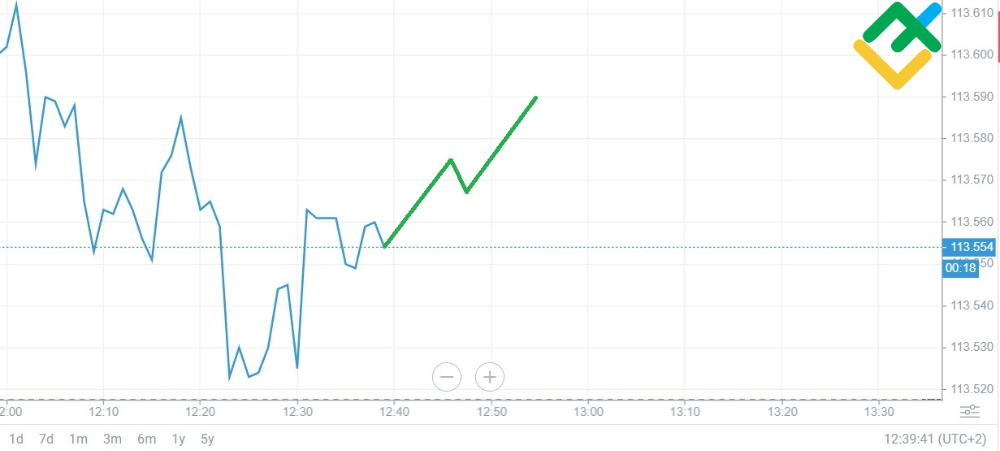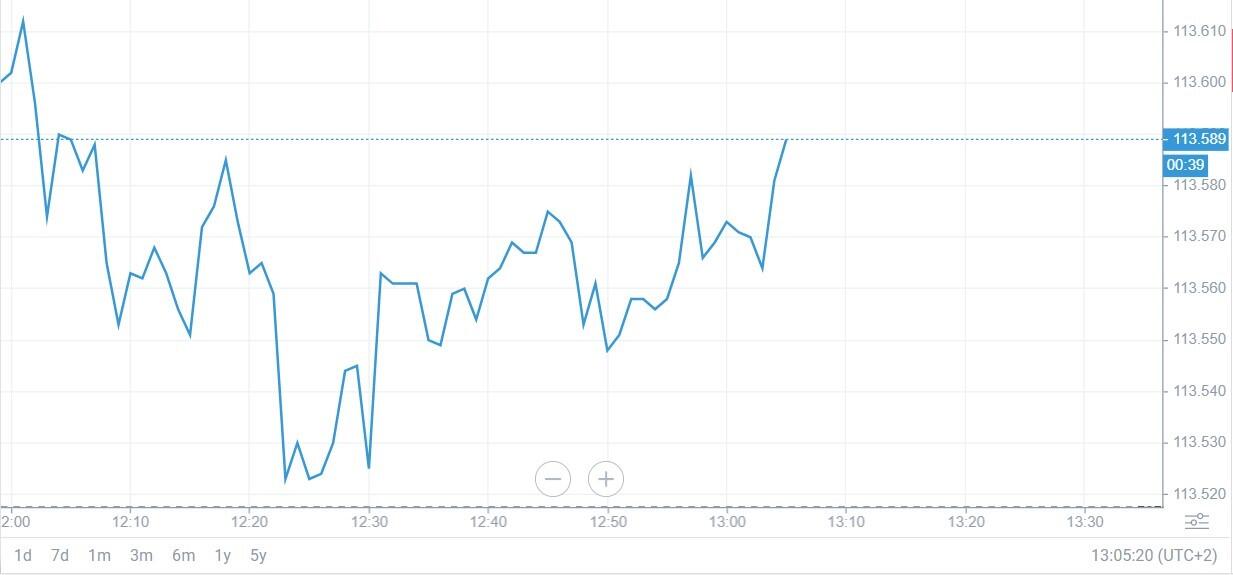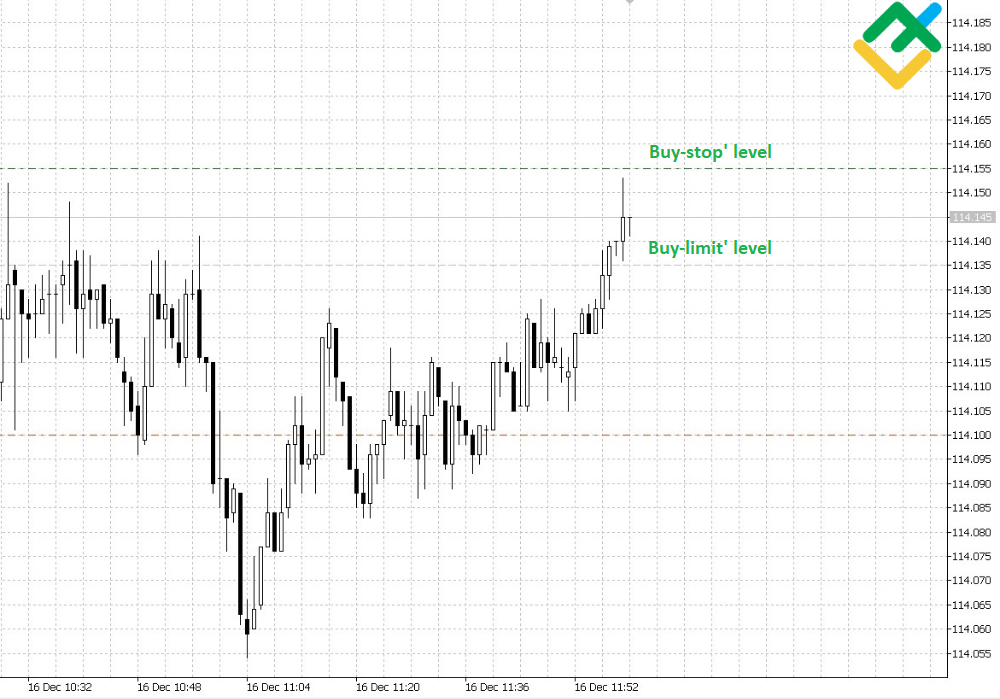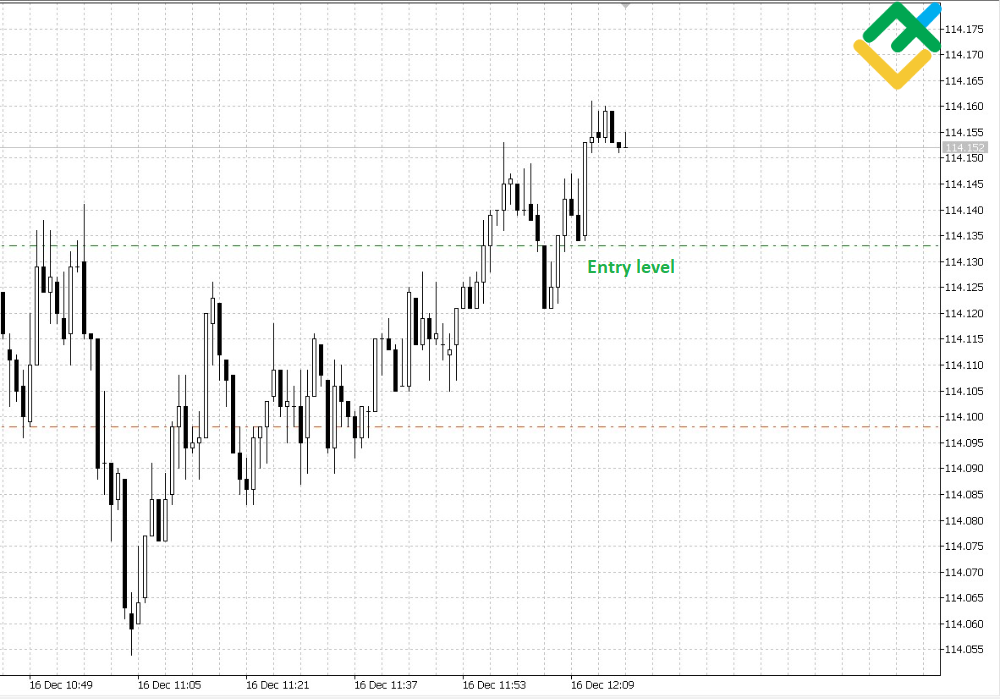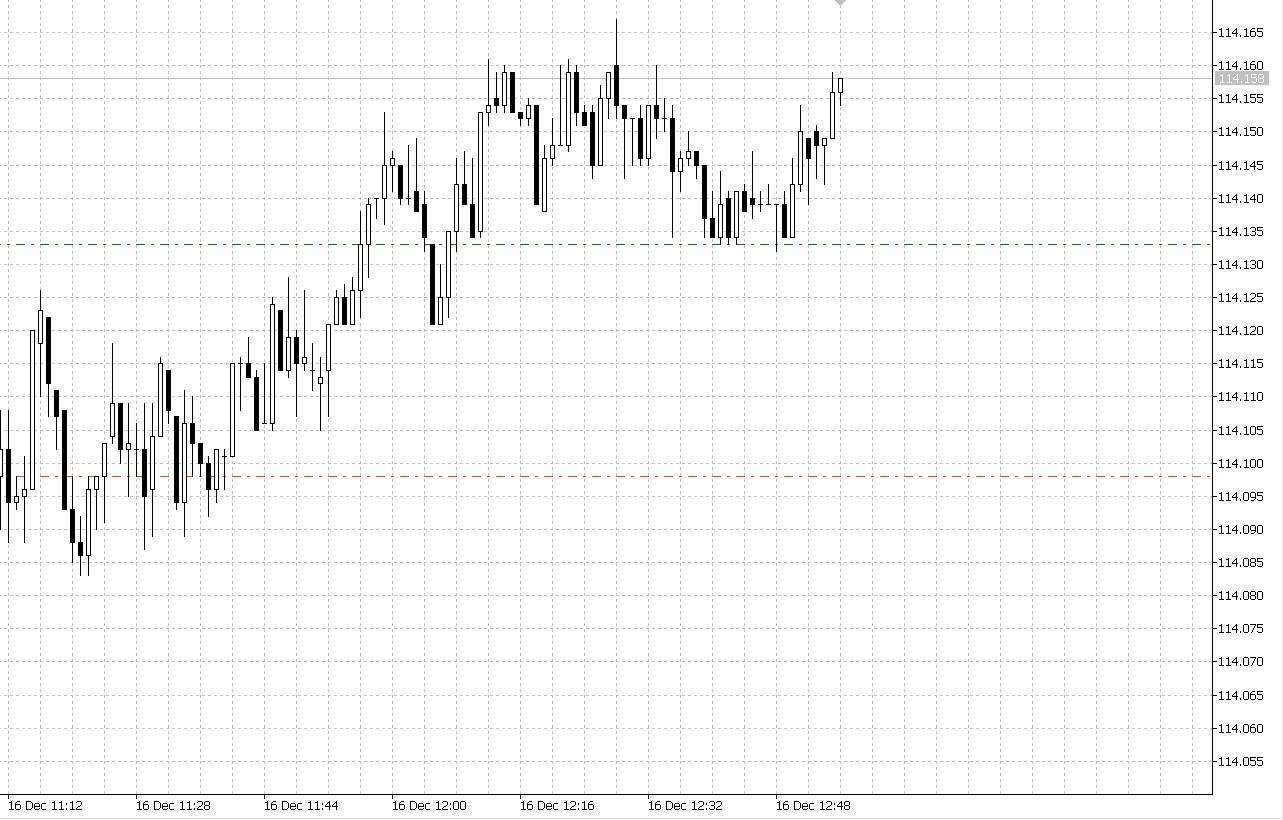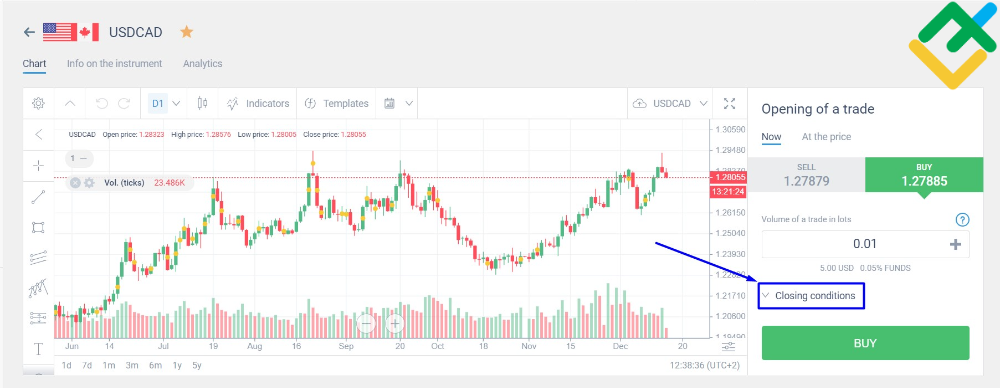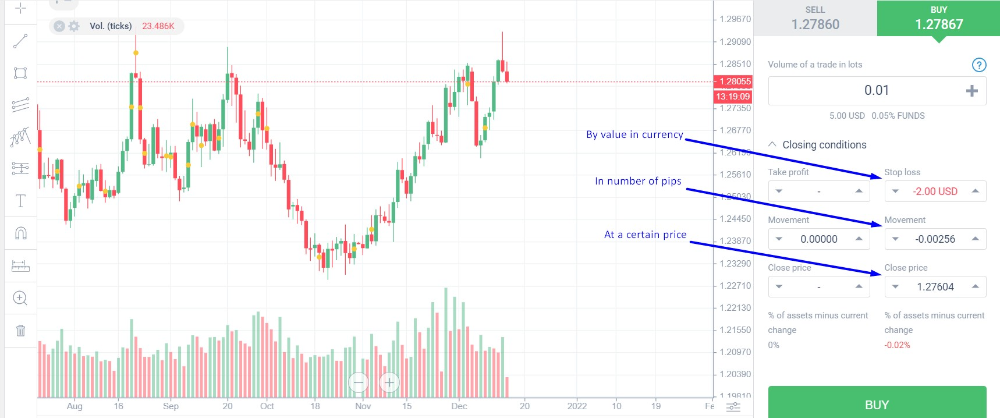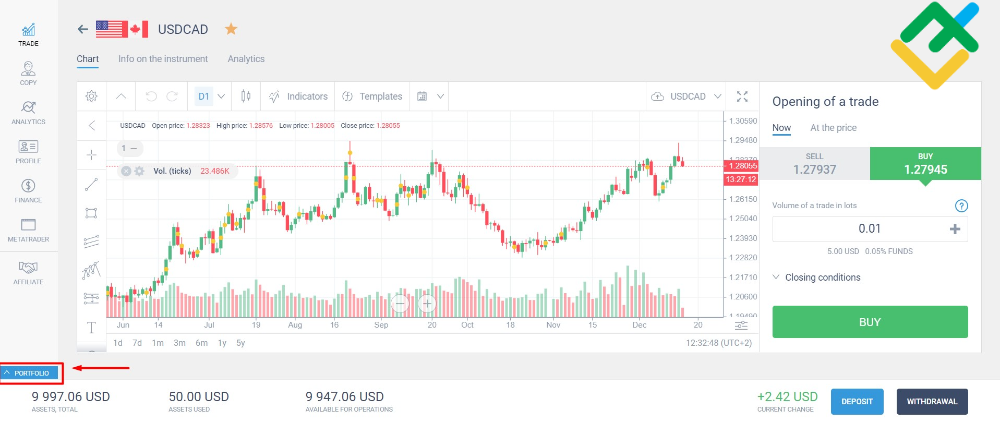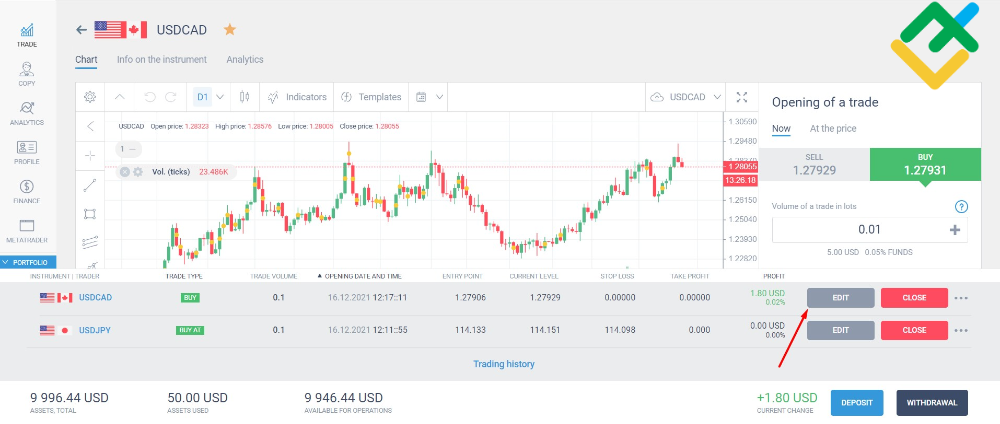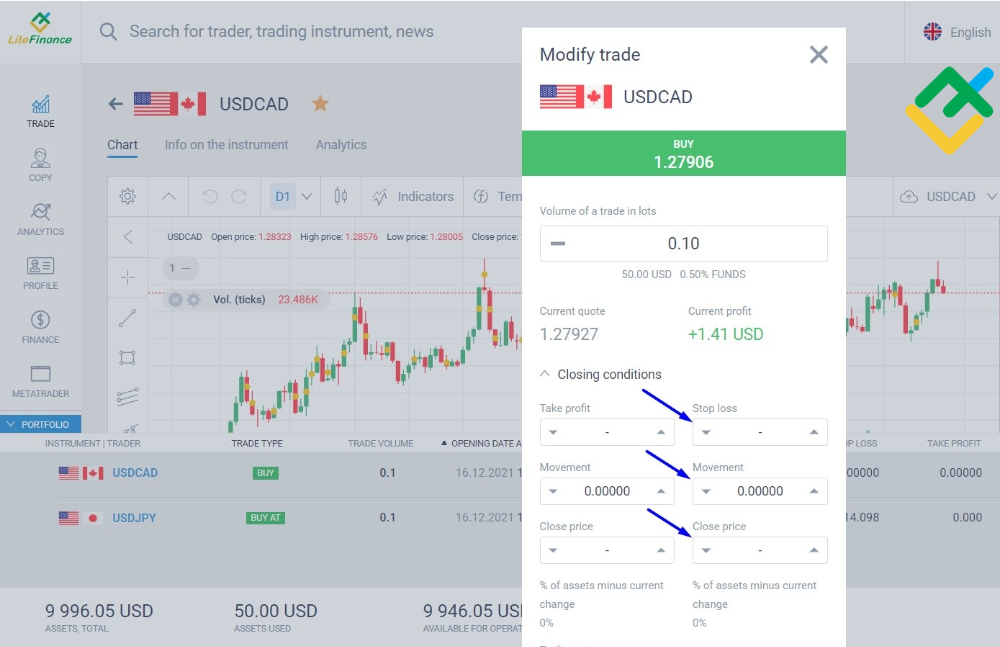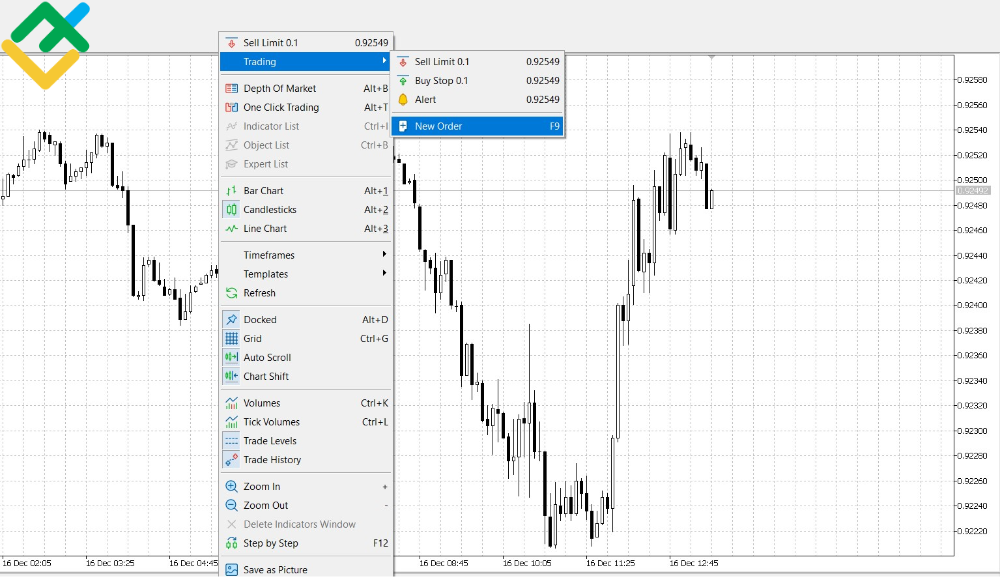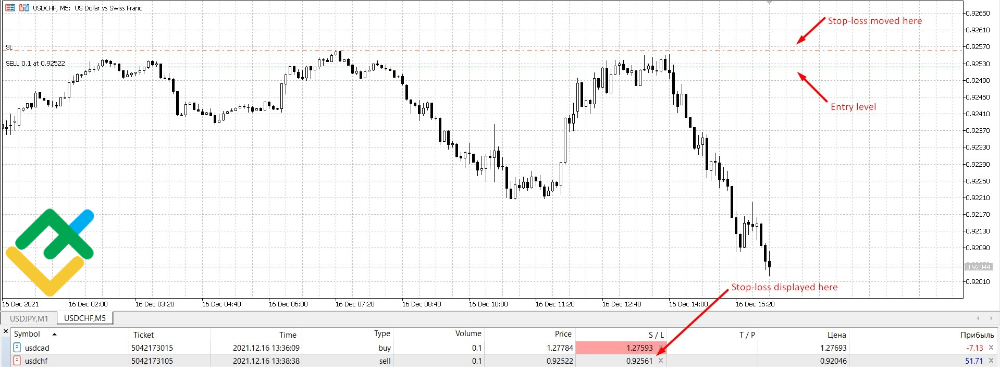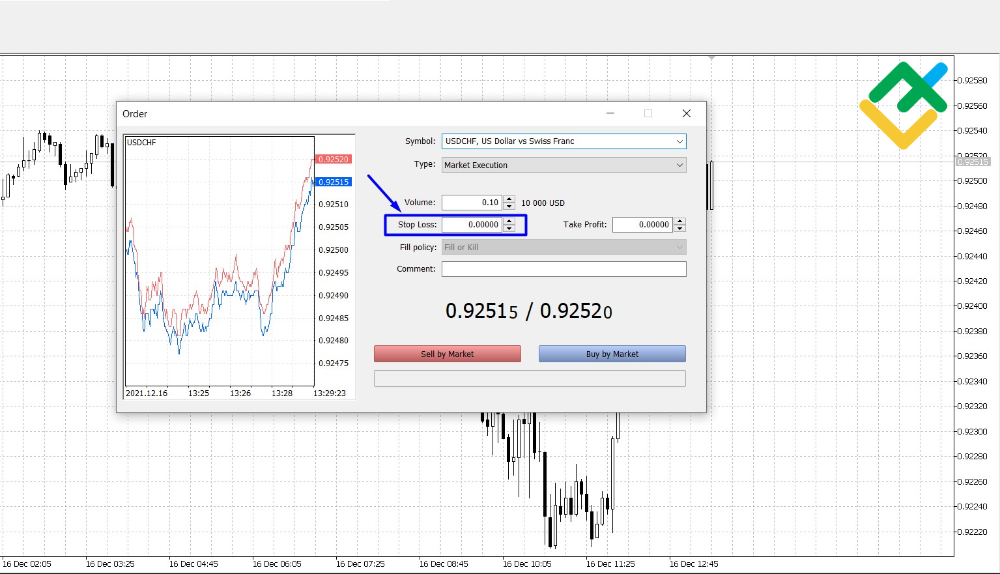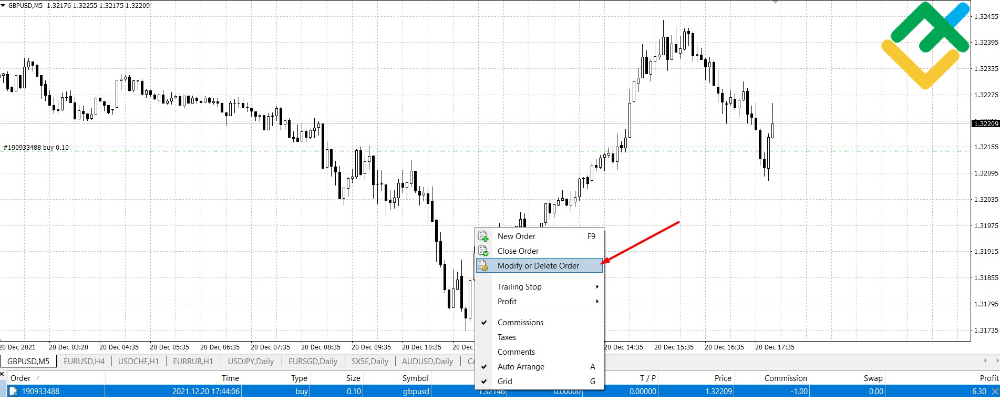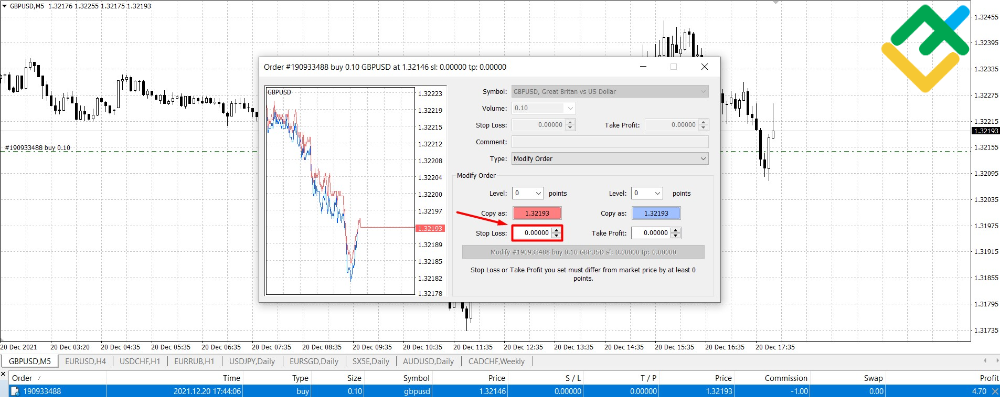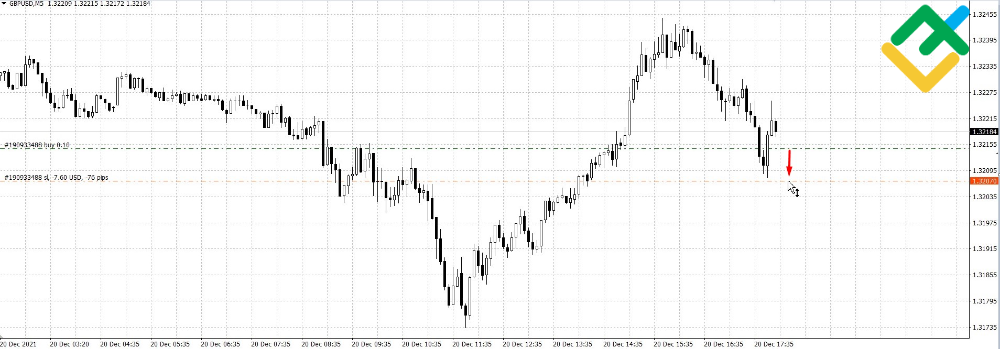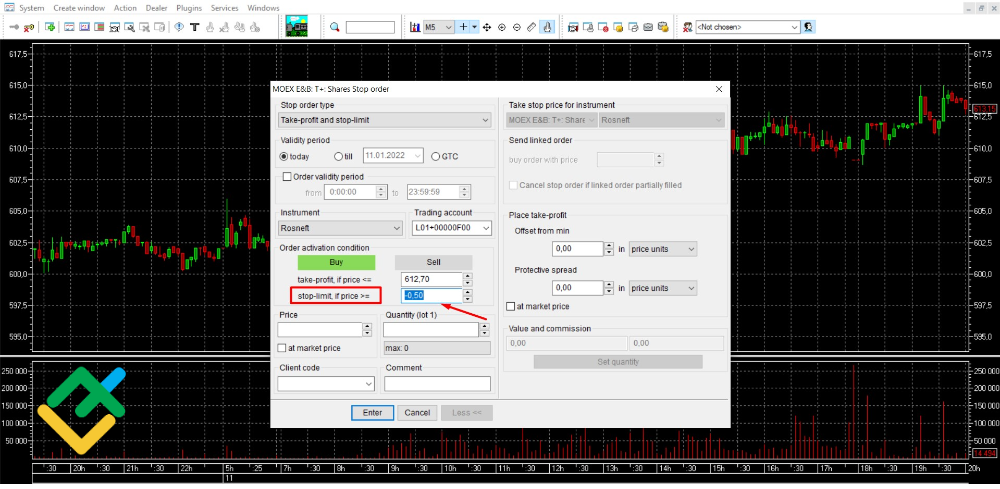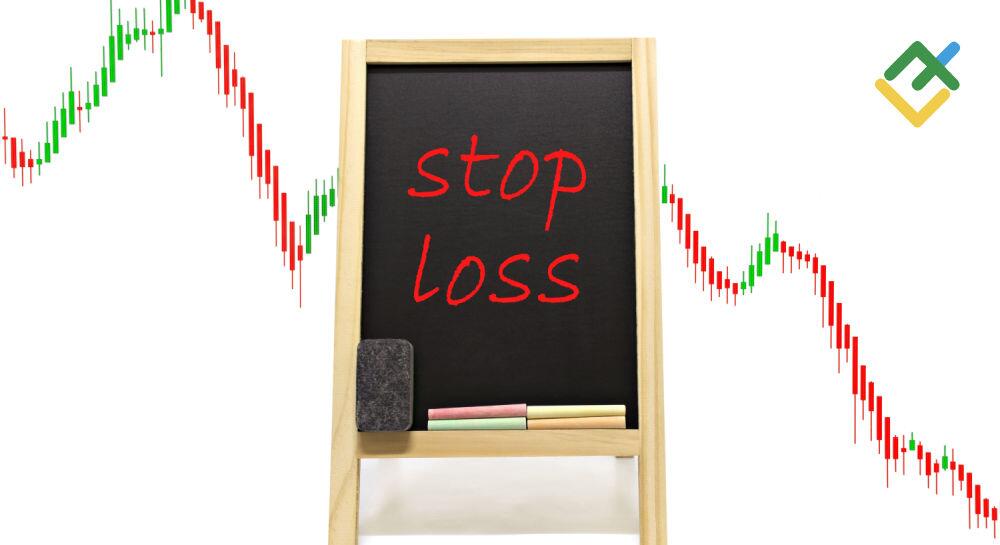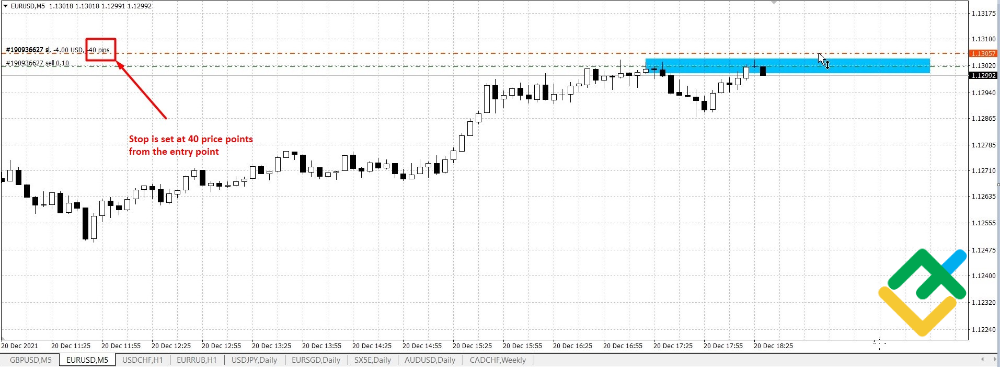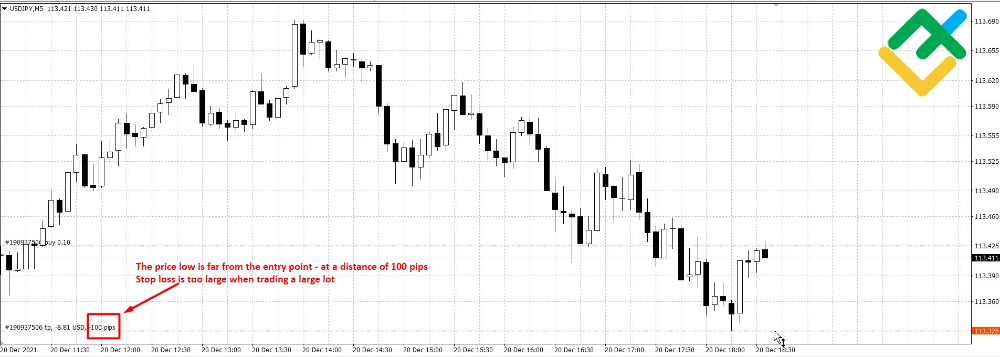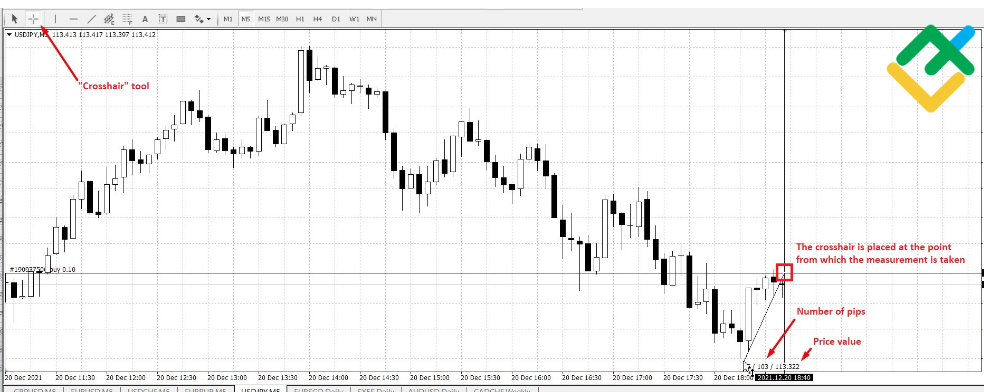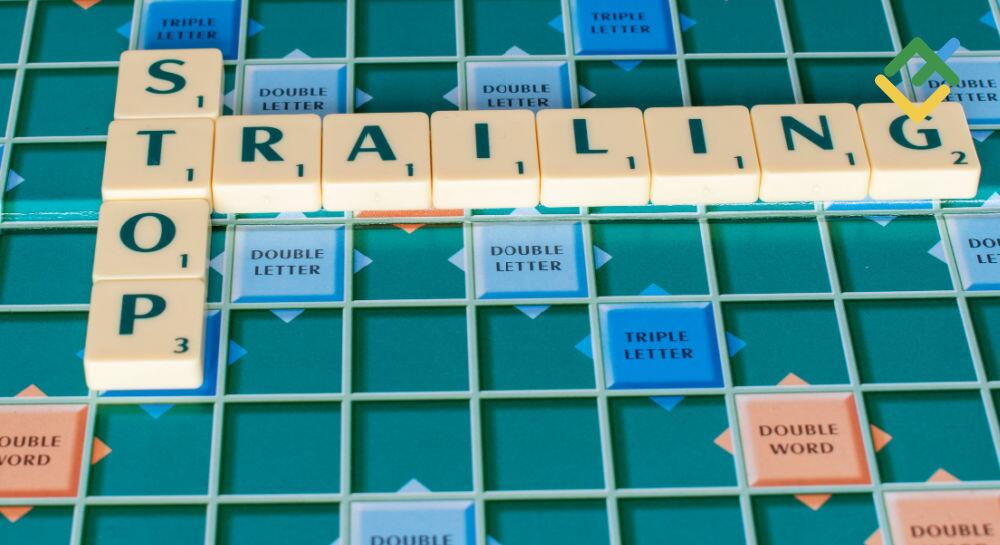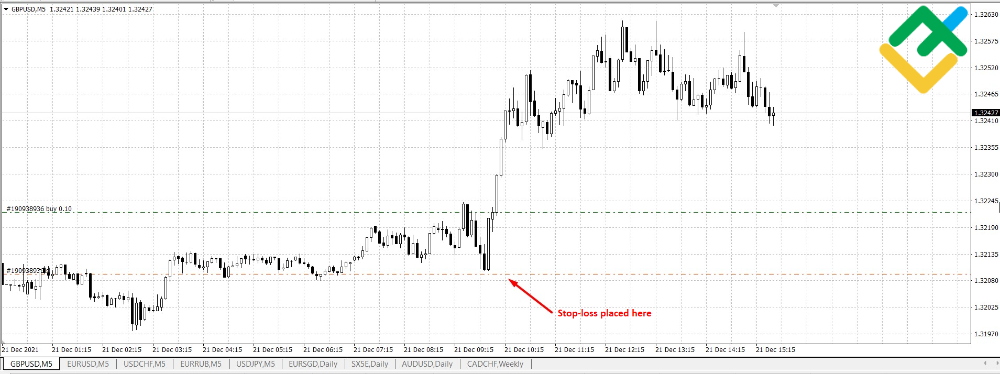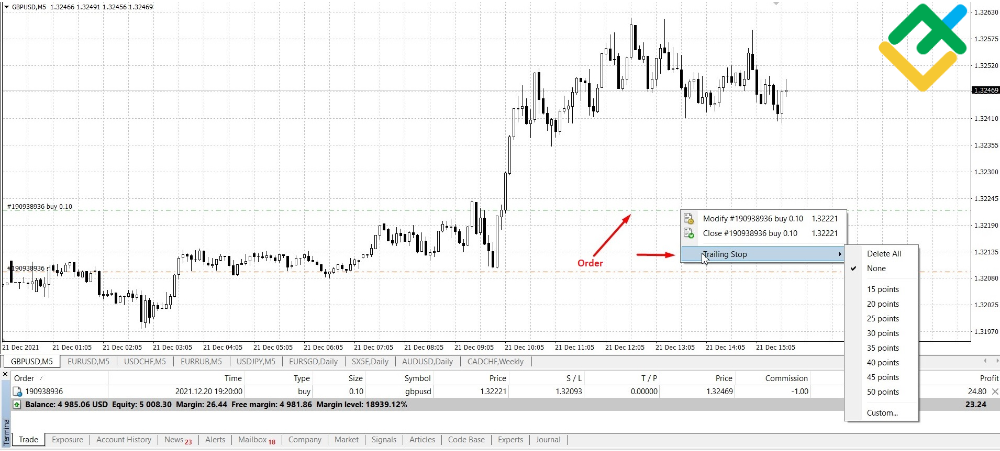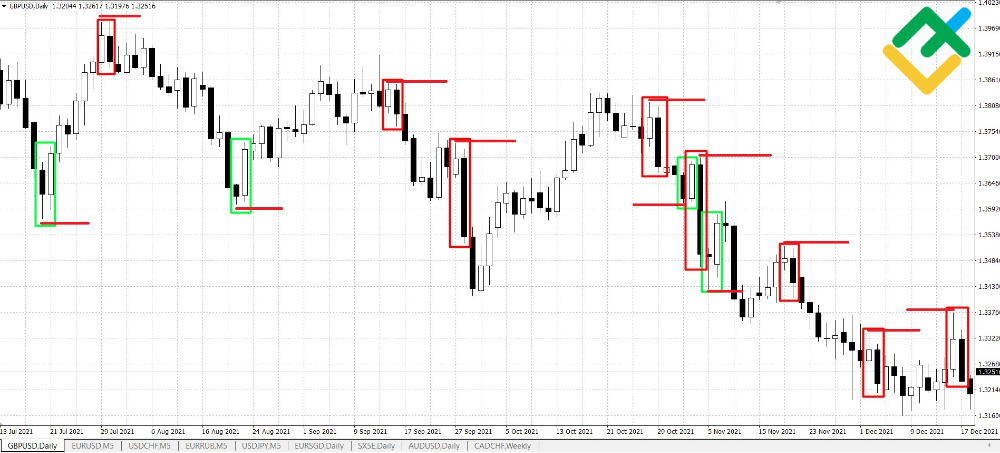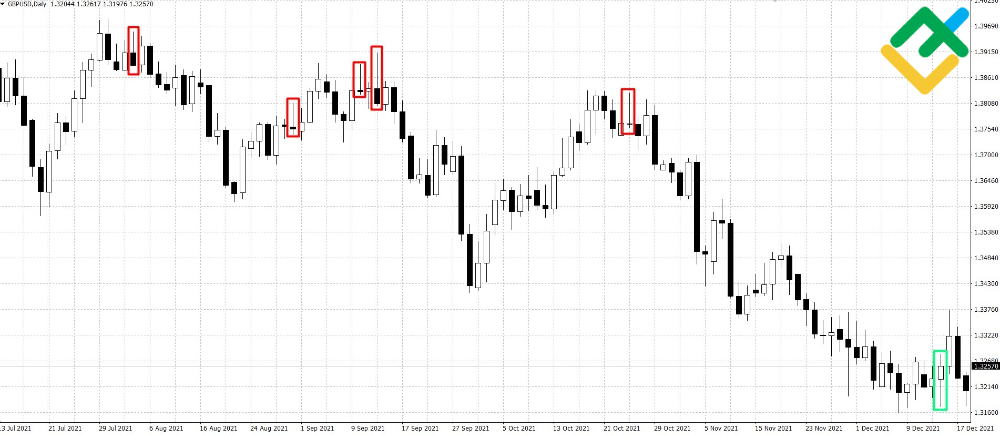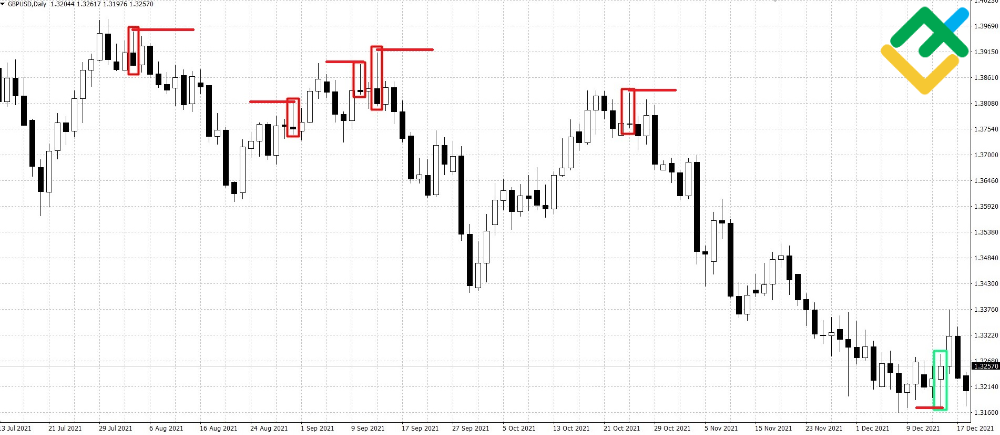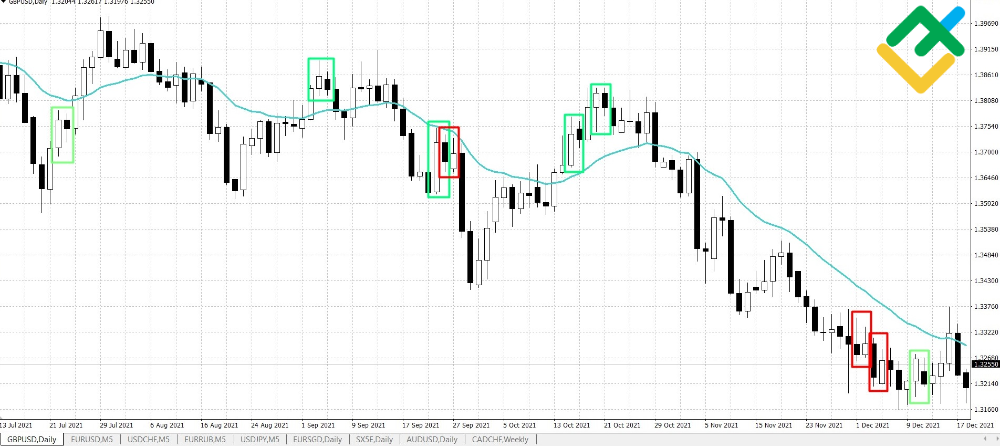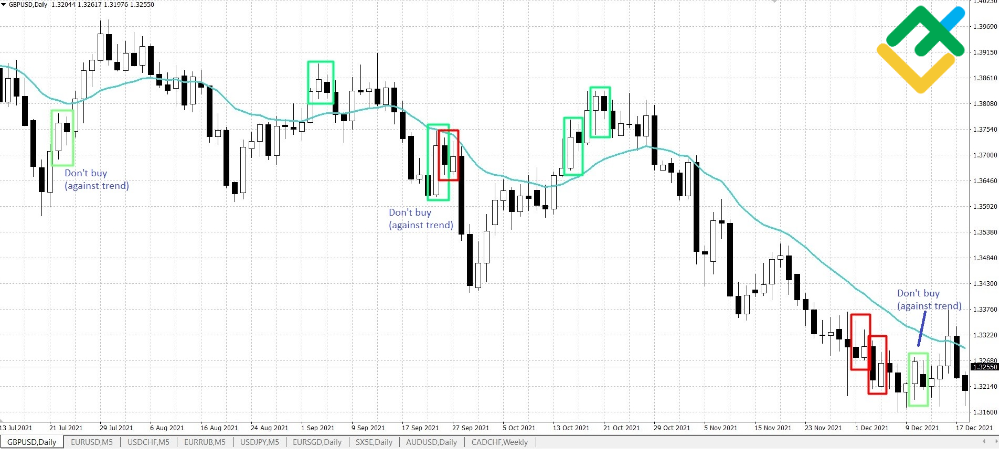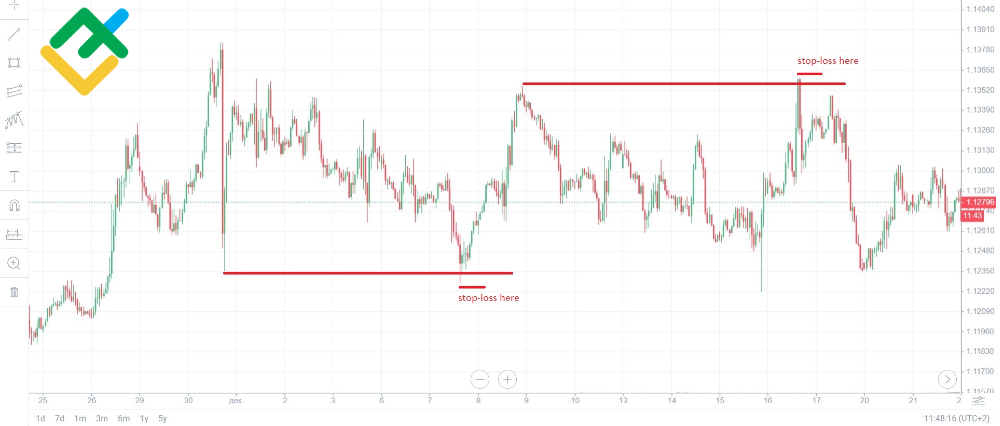A Stop-loss is a necessity. Traders who don’t use stop losses will hardly trade with profits. Do you agree? If you think something like, “Oh, it’s nonsense, I may well trade without all your stop losses,” this article is for you!
The article covers the following subjects:
- Major takeaways
- What is a Stop-loss – definition for beginner
- Why Are Stops Important?
- What is stop loss limit order?
- How to place a stop loss order
- Where to place a stop-loss order?
- What is a trailing stop loss order?
- What is stop loss in scalping?
- Stop loss in swing trading
- Stop Loss in day trading
- Stop-Loss Strategies
- Advantages of the stop loss order
- Disadvantages of the stop-loss
- How to use stop loss order in Forex: Summing Up
- Stop Loss FAQs
Major takeaways
| Main Thesis | Insights and Key Points |
|---|---|
| Definition: | A stop-loss order is designed to limit a trader's loss in an unfavorable market situation. It's not just insurance but an obligatory element of any trading strategy. "Stop loss" is essential due to market unpredictability. |
| Importance: | Stop-loss orders prevent emotion-driven decisions, allowing traders to objectively analyze market situations. Without "stop loss", traders often rely on hope, leading to emotional decisions and potential significant losses. |
| What is stop loss limit order? | A stop-limit combines a stop order and a limit order. While "stop loss" closes positions, stop-limit orders open them under specific conditions. They differ in how they react to market liquidity and price movements. |
| How to place: | On the LiteFinance platform, a "stop loss" can be set by currency pairs, number of pips, or a predetermined closing price. Similar methods are used in MT4, MT5, and Quik trading platforms. |
| Where to place: | The placement of a "stop loss" depends on the trading strategy. It can be based on price charts, a set distance from the entry level, or market volatility. The method should align with the trader's strategy and risk tolerance. |
| Stop-Loss Strategies | Setting a "stop loss" should consider the market situation in the chart. Tips include calculating risk exposure, avoiding placement around major news, and ensuring potential profit is greater than the stop loss size in trend trading. |
| Advantages: | Using "stop loss" orders helps in automatic exiting trades, saving deposits, and ensuring objective market analysis. It prevents emotional decisions and promotes disciplined trading. |
What is a Stop-loss – definition for beginner
A stop-loss order is an order placed with a broker to close a protected position when a quiet market develops according to an unfavorable situation scenario.
If there is a buy signal (long position), a stop loss will close it if the price falls below a particular level, lower than the opening price.
Stop-loss orders are designed to limit a trader’s loss.
Why Are Stops Important?
Beginners do not always understand what a stop-loss is, as there are sometimes inaccurate descriptions of its work principle. Many traders think a stop loss is unnecessary, considering it a measure for cowards. There are often recommendations like “Set a stop loss to limit potential losses.” But most inexperienced traders believe they could avoid significant losses.
A stop loss is not a kind of insurance, it is an OBLIGATORY element of any trading strategy.
The need for a stop order in trading is dictated by market unpredictability. For example, the price could go in the wrong market direction. And in this case, a stop loss is placed.
Furthermore, one never knows HOW the price can move towards the target value. For example, the price can go more or less evenly 20 pips up from the entry price.
Or it may first go down by 10 pips and then surge by 30 pips, which will be equal to an increase of 20 pips from the entry price.
But the price could well go down by 10 pips from the entry price and continue falling.
So, if a trader is not going to wait through a movement of 100 pips in an unwanted direction for the sake of a profit target of 20 pips, they will use a stop loss. After all, I have already written about that.
Considering all possible trading scenarios, a trader’s task comes down to answering just one question, how much they are willing to accept a significant risk exposure and have a chance to make profit.
Besides, the risk management level is not defined in the style of “I am ready to risk $100 to earn $200”, it is determined based on objective facts. That is, based on test results, the trader sees that these are precisely such stop loss and take profit (potential high risk and profit) that make the trading strategy profitable.
Let us compare traders who employ stop-loss orders and those who ignore them.
If people use stop-losses:
Automatic exiting trades will save most of their deposits, not allowing emotions to rule the trading process and discouraging them from waiting until the price “turns in the profitable direction.”
- Their brains learn to analyze such a situation in the market objectively, to accept that the price may not go in the desired direction.
If people don’t use stop-losses:
Their trading decisions are based on the hope for the better and the belief that sooner or later the price will reach the needed level.
- The trading strategy is affected by emotions. At the moments of emotional peaks (when the profit target is already “enough” or when the loss is “too big”), these traders could not do the right actions and miss the profit in the first case or exit a non winning trade with a significant loss in the second one.
Note that all professional traders recognize the necessity of a stop loss. I do not persuade you, of course, the choice is up to you.
What is stop loss limit order?
Let us move on to discuss more complex issues, such as stop-limits on the stock exchange, cryptocurrency, and Forex market.
A stop-limit combines two types of orders: a stop order and a limit order.
A stop- order works like this: first, you set the entry price. For example, the current market price is 114.145, and your strategy sends an entry signal when the price reaches 114.155, so you set a stop order at this level.
Next, you determine the price at which you are willing to enter a trade when you have received an entry signal. Let us explore a stop loss limit order example below.
If you want to enter the market only on the correction, for example, at 114.135 instead of 114.155, you place a limit order at the desired price, 114.135.
When the price reaches the stop order (at 114.155 in the example), it may not be corrected down to the limit order level (at 114.135 in the example). If so, the trade won’t be entered. If the price goes down to the limit order, the trade will be entered at the price you want.
If you enter a winning trade by the standard stop-order at 114.155, the position will be 100% opened above this level. However, with this type of order, you could enter a less profitable trade, for example, at 114.160 if there is not enough liquidity in a quiet market and the nearest seller is there.
Stop-loss and stop-limit are different types of orders, as the first order closes position moves and the second one, on the opposite, opens when particular conditions are met.
How to place a stop loss order
The way a stop-loss is set in different trading terminals is similar. Let us consider the most popular trading platforms and how to manage your retail investor accounts there.
How to place a stop-loss order in the LiteFinance platform
To set a stop-loss, click on the Closing conditions button in the trade parameters window.
There are three options to set a stop-loss.
By the size in currency pairs. For example, the stop-loss will be triggered after a price movement equivalent to 1 USD.
By the number of pips. The stop loss will work out after a price movement of 20 pips, for example.
By the predetermined closing price. For example, the stop loss will work out when the price reaches 1.32333.
If you want to place a stop-loss for an already open short or long position, you need to enter the Portfolio tab.
Next, choose the needed trade and click Edit.
There will open the trade parameters, where you can set a stop price as a stop-loss order based on the same three methods.
If you want to change the stop-loss parameters, click on the up or down arrows on the right or left of the chosen placement method, or you can enter the value manually.
How to set stop loss in MT5
In MT5, you set a stop price as a stop loss in the context menu of opening a short or long position. First, you click the New Order and specify the closing price for the position.
You can set a stop loss for an open position in two ways:
In the terminal window, find the position you would like to set a stop loss on, right-click on it and select “Modify or delete.”
Next, set the desired level of your stop loss in the pop-up window.
If the one-click trading position in MT5 is enabled, you can place a stop loss directly in the chart. Click on the position level and drag the stop loss level (red line) up or down to the desired level.
How to set a stop loss in MT4
You put a stop loss in MT4 in the same way as in MT5:
When you open a new position, you enter the value for the stop loss.
You can modify an already opened position and add the stop loss parameters.
If the one-click trading position on MT4 is enabled, you can set a stop loss right on the chart. Click on the position level and drag it up or down to set the stop loss level.
How to set a stop loss in Quik
If you are interested in exchange trading via the QUIK trading platform, you will also need to put a stop loss as an integral part of any trading platform system.
There are several trading tools to set stop loss in Quik:
F6. You can click the F6 button at any moment if you have set the chart of any trading complex instruments.
Right-click on the table of orders. Select “New Stop Order.”
The icon on the toolbar above.
These actions will lead to the same result, you will set the price to trigger a stop loss.
Note that in Quik, stop loss is not set in the usual sense. Formally, an opposite pending order should be placed to open a position (stop order) with the same volume as the previously entered order, as a result of which the first order will be closed.
For example, when buying 100 AAPL shares at $163, the stop loss of the stock will look like a sell order for 100 AAPL stocks at $160.
Start trading with a trustworthy broker
Where to place a stop-loss order?
The fundamental factor when choosing a place for a stop loss is the rules of the trading strategy. There are no right or wrong levels for stop losses in general.
I will give a few examples of choosing an appropriate level to set a stop price as a stop loss:
Based on the price chart, you set a stop above the price high (the resistance level) or below the low (the support level). The below figure displays a buy trade.
The zone of high demand, a stop loss strategy is set below.
You place a stop loss at a certain distance from the entry level, for example, 10, 20, 50 pips, etc.
Depending on volatility. There are many indicators and tools to measure market volatility. Accordingly, the greater the volatility, the larger the stop loss. With a decrease in volatility, stops are also reduced.
If you trade with high leverage and the same volume (lot), consider the second option. The price top/bottom could be too far to observe the acceptable risk management level. The same is with volatility; if it increases, you will have to increase the stop loss, and therefore the percentage of a high risk per trade. Don’t forget that margin carries significant risk and requires trading experience and knowledge.
These variants will be perfect with some trading strategies and unsatisfied with others. I personally prefer the method of setting a stop loss strategy based on the market situation in the chart.
There are a few tips on how to set stop loss strategies for beginners:
Before you put a stop loss, you should calculate the acceptable risk exposure in the percentage of your deposit.
Do not place a stop loss during 15 minutes before and 15 minutes after the publication of important news. Liquidity during such choppy periods may not be sufficient for your protective order to work out at the price you specified. A slippage could occur, resulting in losses.
In trend trading strategies, potential profit should ALWAYS be greater than the stop loss size. In counter-trend strategies, the take profit could be less than the stop loss, but not more than two times as a rule.
How to calculate stop loss?
The stop loss size is always calculated based on the entry point.
It is easier to calculate the stop loss size when it is measured in price points.
How to calculate the stop loss if you open a long position (purchase):
The stop loss price = the entry price – the stop loss size.
Suppose you buy a financial instrument at 1.32000, and the stop loss is 50 price points (pips).
Therefore, the stop loss is set at the price = 1.32000-0.00050 = 1.31950
How to calculate the stop loss if you open a short position (sale):
The stop loss price = the entry price + the stop loss size.
Suppose another Forex trader (as is often the case in the market), on the contrary, sells at the same price, 1.32000, and their stop loss is 100 price points (pips).
In this case the stop loss price is = 1.32000+0.00100 = 1.32100
To calculate the stop loss price in the terminal, you can use the crosshair cursor. You hold down the left mouse button at the market entry level and drag the cursor up or down for the required number of pips. The price value will appear next to them.
If there are traders who like complicated calculations among my readers, I recommend considering the calculation of the stop loss in currency units.
The calculation is performed automatically in the LiteFinance trading terminal. Let us see how it works.
Stop-loss formula for buy trades:
The stop loss price = opening price – (stop loss size (in currency pairs units)/price of one pip).
Stop-loss formula for sell trades:
The stop loss price = opening price + (stop loss size (in currency units)/price of one pip).
The value of one pip depends on two things:
the trade volume, i.e., the lot size you trade. The greater is the trade volume, the more expensive is a pip;
the asset traded. I believe it is easier to find the pip value of the needed instrument in a search engine.
Example:
A Forex trader buys 0.1 lots of EURUSD at 1.32000 and wants to set a stop loss of $5.
The cost of 1 pip for the minimum lot (0.01) for this asset is $0.01. If the volume is 10 times more, then the pip value will also grow 10 times and will be equal to $0.1
The stop-loss price is 1.32000 - ($5 / 0.1) = 1.31950
A stop loss of $5, in this case, will be 50 pips.
What is a trailing stop loss order?
A trailing stop order (trailing stop-loss) is the function of the trading terminal that adjusts the stop loss value in the market trend direction if the potential profit yielded by the trade is increasing.
I would compare a trailing stop with a bird in the hand:
If the price hits and reverses without reaching the target, a stop loss will allow to take a part of profits and exit a trade with a bit of gain (in perfection).
Using a trailing stop, a trader reduces the chance of closing a position by take-profit as the chance of exiting a trade at the original stop also reduces.
First, you determine the distance from the current price, at which the trailing stop will be located. As soon as the price hits and moves away from the initial stop order by this distance, the trailing stop will be activated, moving the protective order along with the price movement. Trailing occurs only when the market moves "where it should,” that is, AWAY FROM the stop loss, not towards it.
If the price begins to move in the opposite direction, the Stop Loss level will remain the same until the trade is closed by Stop Loss. Thus, there is a chance that the price will reverse until it reaches the stop loss moved closer.
This stop function is available only in the MT4 and MT5 terminals.
You can activate a stop loss order after you place a trading order, both limit and market ones.
Let us explore an example of a GBPUSD trade. The initial stop loss strategy is marked by an arrow.
There are two ways to activate a trailing stop loss.
Right-click on the order level in the chart and choose “Trailing stop” in the pop-up window.
In the “Terminal” window, right-click on an already open position and select “Trailing stop” from the pop-up menu.
Next, you need to select the distance in points at which the trailing stop loss will be moving along the price.
I set the trailing stop at 50 points and my stop loss has automatically moved closer to the current price.
In theory, a trailing stop is an ideal way to ensure your trades. But n practice, there are two significant drawbacks.
Trailing stop often closes a position too early, as the price seldom reaches a take profit via one directed movement. Yes, the position moves and is closed with a profit, but the profit could have been several times greater.
- Because of the trailing stop, most of the profitable trades will have to mitigate risk and have a lower take-profit/stop ratio than originally planned. The potential loss can also be reduced, but the future performance of at least trend trading strategies will be poorer due to a reduction in the potential profit.
What is stop loss in scalping?
Stop-loss is also relevant for short-term strategies, including scalping, with the average true range holding time of position moves of about 10 - 100 seconds. Given the high frequency of opening a short position in such strategies, the absence of a stop loss order in case of a sudden price movement may cost all profits made during the entire day.
Short-term Forex traders employing such strategies are also called scalpers because they trade on short price movements and open a short position placing different stop loss orders according to their plan. As the potential profit is not high, the stop points are also small, orders are placed close to the opening price.
The main reason for using stop-loss order in Forex trading scalping is not to hedge open positions against sharp price movements. It's just that without stop-losses, you can neither test nor determine the profitability of any strategy, including the short-term one.
Stop loss in swing trading
Let us speak about medium-term Forex traders (or swing traders) who hold positions open from one to several days. This looks almost like an investment advice. Do swing traders use stop losses to adjust their strategy’s future performance on the market?
I don’t want to repeat myself, but the main reason for using stop losses in Forex trading is still the same. Without it, you cannot trade systematically and, therefore, it’s impossible to understand whether a trading system is good or not.
Let us speculate in the “what if” Forex trading style.
Suppose a medium-term trader doesn’t use stop-loss orders in his personal circumstances.
First, when important news is released, there could be the same situation as in the previous example with scalping. The price could go two, three, or even ten times farther than planned by the trading system. So, to avoid a losing position and reduce your money because of unexpected price fluctuation, study the fundamental environment (for example, on MarketWatch) and do not enter any trades during important news releases.
Second, if a trade was yielding a take profit and went into a loss after that, one will hardly accept the loss and close the position. Because of a phenomenon known as mood swings, a failure following success is more painful than just a failure. In swing trading, an open position can be in profit for a long time, so its subsequent loss will be even more painful.
Third, a swing trader could miss a potentially profitable entry without using stop level to indicate losses. While a trader is waiting for the losing trade to turn into a profitable one, there could appear a good entry point. Due to the emotional instability involved in watching a losing trade, a trader may simply not see this opportunity.
Stop Loss in day trading
What about stop loss orders in day trading? Day trading strategies imply that traders execute trades within one day and exit all trades before the end of the day. The average holding time of a position is about 5-30 minutes, the average true range number of trades per day is 0-5.
Stop losses in day trading, as a rule, are placed below important daily lows or above significant highs in the chart.
In intraday trading, there also could be sharp directed movements associated, in addition to news, with the lack of buyers or sellers in a particular price range. As a result of this imbalance, the price could fluctuate up and down in search of liquidity. If a reckless trader hasn’t bothered to set stop losses and protect the trade in advance, they can close the position manually, but this could be at a much worse price. The losing trade that is to be closed will fuel the price movement going in an unwanted direction in search of liquidity.
Stop-Loss Strategies
A stop loss could be (and must be) used in any FX trading strategy. Let me explain in detail a few trading Forex strategies and demonstrate how to set a stop loss in a real market situation.
Engulfing candle pattern
Trading the engulfing pattern is based on the technical analysis of the candlesticks chart. Each candlestick indicates the price change over a particular period (timeframe).
The recommended timeframe for this strategy is D1. The number of trades could be increased by trading several assets. You won’t need more than 10-20 minutes to look for entry points on ten trading complex instruments.
An engulfing candlestick pattern in Forex trading is composed of two candlesticks directed oppositely. The second candlestick should have a BIGGER body than the first one.
For example, a bullish engulfing pattern occurs when the first candlestick is down (bearish) and the second one is up (bullish).
A bearish engulfing pattern implies that the first candle is up and the second one is down.
You enter a Forex trading position when the pattern is complete, i.e., the second candlestick should close. If you trade in the D1 timeframe, you can put a market order to enter a trade. Make sure there are no important news publications around the time you are going to enter a trade.
How to set a stop loss?
A stop loss order should be a bit farther than the level of the price reversal.
For a bullish engulfing, you set a stop loss below the point, beyond which the price didn’t fall.
For a bearish engulfing, you set a stop loss above the point, beyond which the price didn’t rise.
Pin Bar candlestick pattern
A pin bar is a candlestick with a long wick and a small body that signals that the price has abruptly reversed because of the shift in the balance of power.
A down pin bar indicates that more traders are willing to sell, and fewer ones want to buy at the current price. In the uptrend, the price is corrected down.
An up pin bar indicates an opposite situation; there are more buyers than sellers at the current prices. The price is corrected up in the downtrend.
The traders who utilize the pin bar trading strategies expect the imbalance to continue.
Therefore, if the pin bar is bullish, one enters a buy trade. The closing price should be higher than the opening price, and the lower candlewick is longer.
If there is a bearish pin bar, one enters a sell trade. Here, the candlestick’s closing price should be lower than the opening one, and the upper wick is long.
One can trade in the timeframes of H1 and longer.
How to put a stop loss:
In both cases, a stop loss is placed beyond the reversal level marked by the long wick of the pin bar.
Inside Bar pattern
The pattern is composed of two candlesticks. The second candlestick is the inside bar because it is engulfed fully by the preceding candle high and low. Unlike the two previous patterns, it is aimed at trading on the continuation of the preceding trend rather than spotting reversals.
You set a pending order once the inside bar has completed, the second candlestick has closed.
You set a pending order to buy a little higher than the first candlestick, which should be up and fully engulf the inside bar.
You set a pending order to sell a little higher than the first candlestick, which should be down and fully engulf the inside bar.
I recommend trading inside bars on the continuation of the preceding trend. You can filter signals using any trend indicator. I used a moving average with a period of 21.
Rules for stop loss:
For purchases, you set a stop loss below the second candlestick (the inside bar).
For sell trades, you set a stop loss above the second candlestick (the inside bar).
Ideally, the price should trigger the order to enter the market during the formation of the candlestick following the inside bar.
If the price hits and breaks through the inside bar in the opposite direction (towards the stop loss), you had better cancel such an order and not enter the market.
Stop loss hunting Forex strategy
It’s time to write a few words about conspiracy theories liked by many Forex market traders who pretend to “understand the essence.” Since ancient times, conspiracy theorists of all kinds have been frightening beginner traders claiming that “Big Forex players” (banks and hedge funds) are hunting for stop levels of “small players” (retail traders). They drive the price of an asset to a level where many have chosen to set their stop-loss orders. The big guys are supposed to buy or sell at good prices by triggering the stop losses of retail traders. After reaching their targets, the big guys will, of course, start moving the price in the opposite direction.
However, all conspiracy theorists fail to answer the following questions:
Does a bank or a hedge fund have enough resources to drive the Forex price towards the needed level? The market turnover is about seven trillion dollars a day.
And what if, having moved the price, the big guys face an even BIGGER player who “will not let” the price return?
- Does it even make sense to take such a significant risk if retail traders' stop-losses are an insignificant part of the foreign exchange market liquidity?
Suppose you wanted to imagine yourself as a part of smart money management, what would you do?
You should identify the places where many other traders may have placed their stop losses and enter trades in the opposite direction:
You enter purchases where buyers’ stop losses are placed (as a buyer’s stop loss is a sell order).
You enter sales where sellers’ stop losses are placed (as a seller’s stop loss is a buy order).
Next, the general rule is that the longer the timeframe of the price reversal, the more stop losses will be triggered. The strategy suggests the following reasons:
One can’t trade large volumes in short timeframes. The execution of large orders will move the price against the trader, thereby worsening the risk/reward ratio.
As the volume of orders increases, traders shift to longer timeframes, as there will not be such a significant impact as the target profits are greater (in price points).
Therefore, the price reversals in longer timeframes, starting from H1, look most profitable. If I were the shark of the stock market, I would use these timeframes to buy in large volumes:)
In terms of stop loss hunting the Forex market isn’t much different from the stock exchange or the cryptocurrency markets. In any market, the price makes global and local highs and lows. So, you can apply the theory of stop loss hunting Forex trading strategy to any trading asset, currency pairs (such as EURUSD), stocks, commodities, trading CFDs, and so on.
Next, you should wait for the confirmation that a volatile market won’t go towards stop losses. Most traders call this a false breakout. For me, this confirmation is a breakout of the nearest price reversal. Note, this rule is subjective, you could use any other tool for confirmation.
How to avoid stop loss hunting Forex
Fear makes the wolf bigger. Therefore, having read scary stories, traders want to “outplay everyone,” avoiding a hypothetical stop loss hunting Forex strategy.
If you interpret some market movements as stop loss hunting Forex trading, it is just a supposition based on a feeling rather than on an objective fact. It is like ancient people thought that the sun goes around the earth just because of subjective perception.
Yet, let us go on speculating, just for the sake of entertainment.
If we assume that someone sticks to stop loss hunting Forex strategy and is hunting for our stop-loss orders, we need to find out where the hunters would place THEIR stop losses. If we assume that some people have bought because other traders’ stop losses worked out, the stop losses of these BIG BUYERS should be somewhere BEYOND these levels.
But first, you need to make sure that your trick has succeeded. As a result of stop loss hunting Forex, first, the market price should go in the needed direction (in my opinion, it should go beyond the nearest local reversal). Only after that you should consider entering a trade yourself.
After all, do not forget that all these manipulations do not guarantee that your own stop loss won’t be triggered. It might not have been the stop loss hunting Forex but a spontaneous market movement.
Advantages of the stop loss order
Using a stop loss gives several indisputable advantages:
It is a big step towards your own profitable strategy that can help to boost your personal finance.
Emotions do not affect trading decisions. For example, you won’t put up with a loss, waiting for the market price reversal in the needed direction.
You gradually teach your brain to think probabilistically when you enter a trade and accept that the price could go in any direction, both wanted and unwanted.
Lower risks involved from significant losses resulting from sharp, unexpected price movements. If a trader doesn’t use stop loss orders, the loss could increase tenfold when there is an important news release and may lead to losing money rapidly.
It gives a feeling of security and calmness, saving your nerves and energy during trading. Without a stop loss, a trader is constantly stressed always being prepared for the worst.
At a particular stage, it becomes clear that even ALLOWING the possibility of trading without a stop loss is as strange as allowing push-ups from the floor without a floor. A protective order is part of trading, and trading without stop losses is not trading in its normal sense. It is natural to insure your funds as the market price could go both up and down at any moment.
Disadvantages of the stop-loss
The only drawback of the stop loss, in my opinion, is that you can cancel it after placing ;)
If you adopt a new trader’s approach and you are trading like a gambler approaching a game of chance, a stop loss may prevent you from feeling the full range of emotions. For example, you use the averaging trading strategy. After a losing trade, you enter another one in the same direction but with a larger volume expecting to compensate for the previous loss. If so, stop loss orders are not for you. Such strategies are not professional trading, they are rather a kind of entertainment, getting excitement.
There is an inconvenience associated with stop loss when trading market orders. You spend more time when placing a protective order itself, and you need a few more seconds to set the stop loss parameters. As a result, you could miss a good moment to enter a trade, as the market price won’t stand still waiting for you:) This problem is solved by placing pending orders (stop orders or limit orders), offsetting a trade, with stop loss parameters set in advance.
How to use stop loss order in Forex: Summing Up
Forex pricing is an unpredictable process. Stop loss and take profit orders are necessary trading tools without which it will be tough, if at all possible, to make profits from the actual market information.
There are no general universal rules how to set stop loss or take profit. Everything depends on the trader, trading strategy, trading style, high risk appetite, and personal preferences.
Forex trading without using a stop loss implies that a trader wants excitement and entertainment rather than making steady profits and gaining professional skills.
For beginners, using stop losses not only prevents the deposit from huge losses but also teaches them to think probabilistically and analyze the volatile market situation more objectively and make a better money management.
Stop Loss FAQs
A stop loss is an order placed to limit the potential losses. In fact, it is a kind of pending order to enter a trade with the same volume as the previously opened position but in the opposite market direction so that the first trade will be exited. To get a better understanding of how to use stop losses, increase your reward ratio and limit initial risk, especially when implementing leveraged trading, it’s recommended to seek independent financial advice from a professional who will help you develop a strategy in compliance with your personal circumstances and trading objectives.
Certainly, it’s recommended to set stop losses. At any point, the limit price could go either up or down, this is the market law. If a trader doesn’t use stop losses, they try to ignore this law, hoping for the best. Therefore, the market analysis is not objective, so there won’t be any steady profits. Generally, it’s crucial to remember that any type of trading comes with risk, and Forex trading as well. Thus, stop losses, robust strategy, and risk management plan can help you limit the downside risks, especially when using such complex instruments as leveraged trading. Moreover, to make consistent decisions it’s reasonable to seek independent financial advice from an experienced party.
The main rule for setting a stop loss is that when it is triggered, a trader should not lose more than 1% of the total amount of his deposit, otherwise the situation can lead to losing much money from retail investor accounts. The second rule is that the potential profit must be greater than the amount of significant risk in the transaction so it will not lead to losing money rapidly. Stop-loss levels should be selected considering these two rules.
A stop loss is a pending order with market execution that is used to exit a trade. When the market price reaches the specified level, the order will be executed at the nearest available price.
A stop limit order is a pending order with limit execution that is used to exit a trade. A stop- order specifies its activation level and the limit price range within which the order will be executed. If there is no opportunity to fill the order within this range, then the order will not be executed.
Both stop losses and stop orders help investors limit the initial risk. They are particularly useful in leveraged trading as margin carries additional risks.
To calculate a stop loss in pips, you should know the opening price and the price of stop loss. For buy trades, the stop loss price is subtracted from the opening price. For sell trades, the opening price is subtracted from the stop loss price.
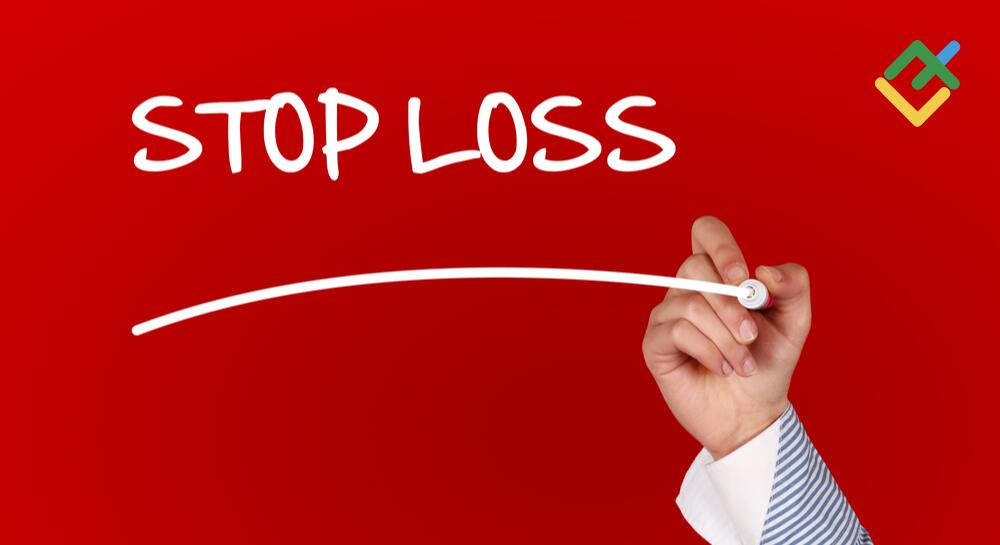
The content of this article reflects the author’s opinion and does not necessarily reflect the official position of LiteFinance. The material published on this page is provided for informational purposes only and should not be considered as the provision of investment advice for the purposes of Directive 2004/39/EC.




